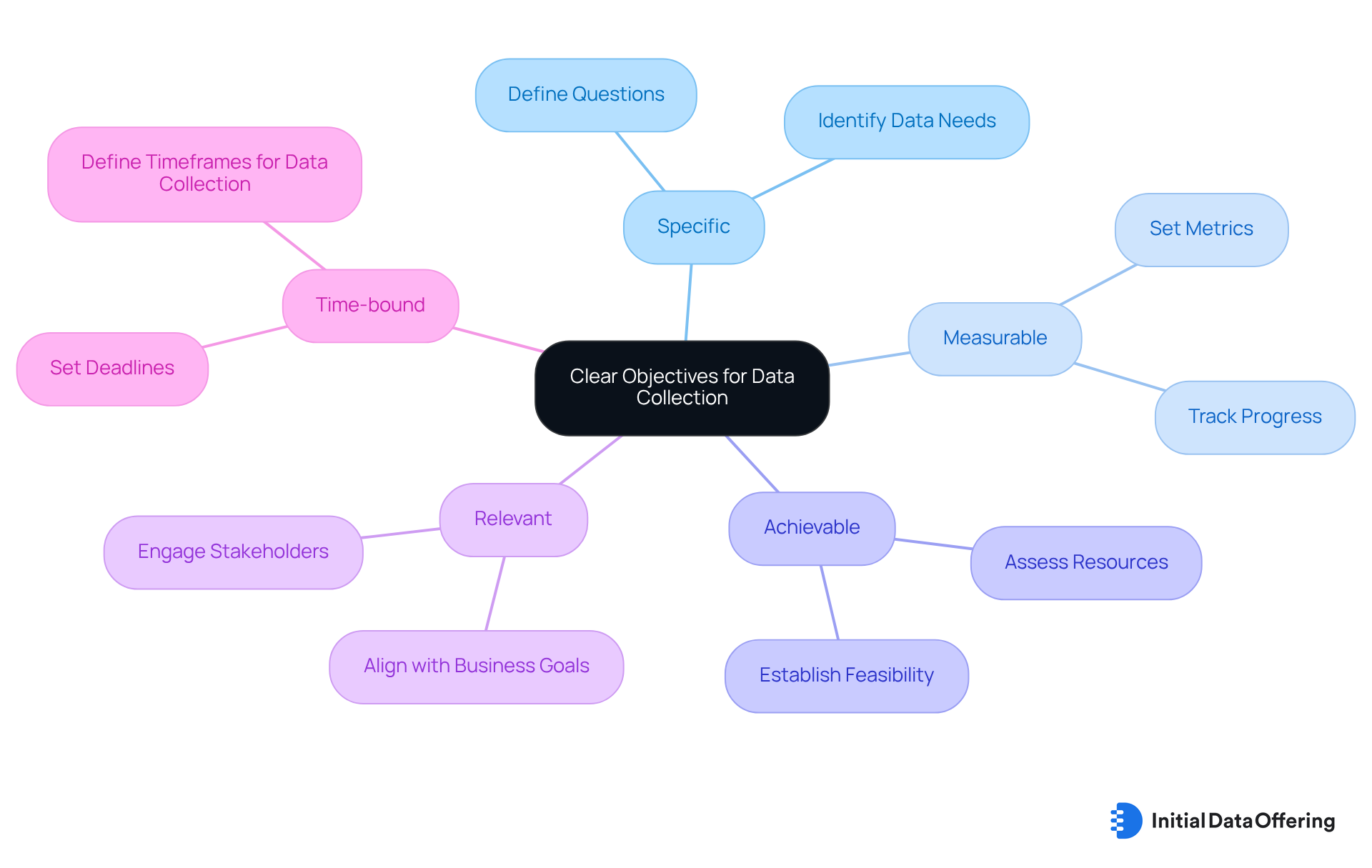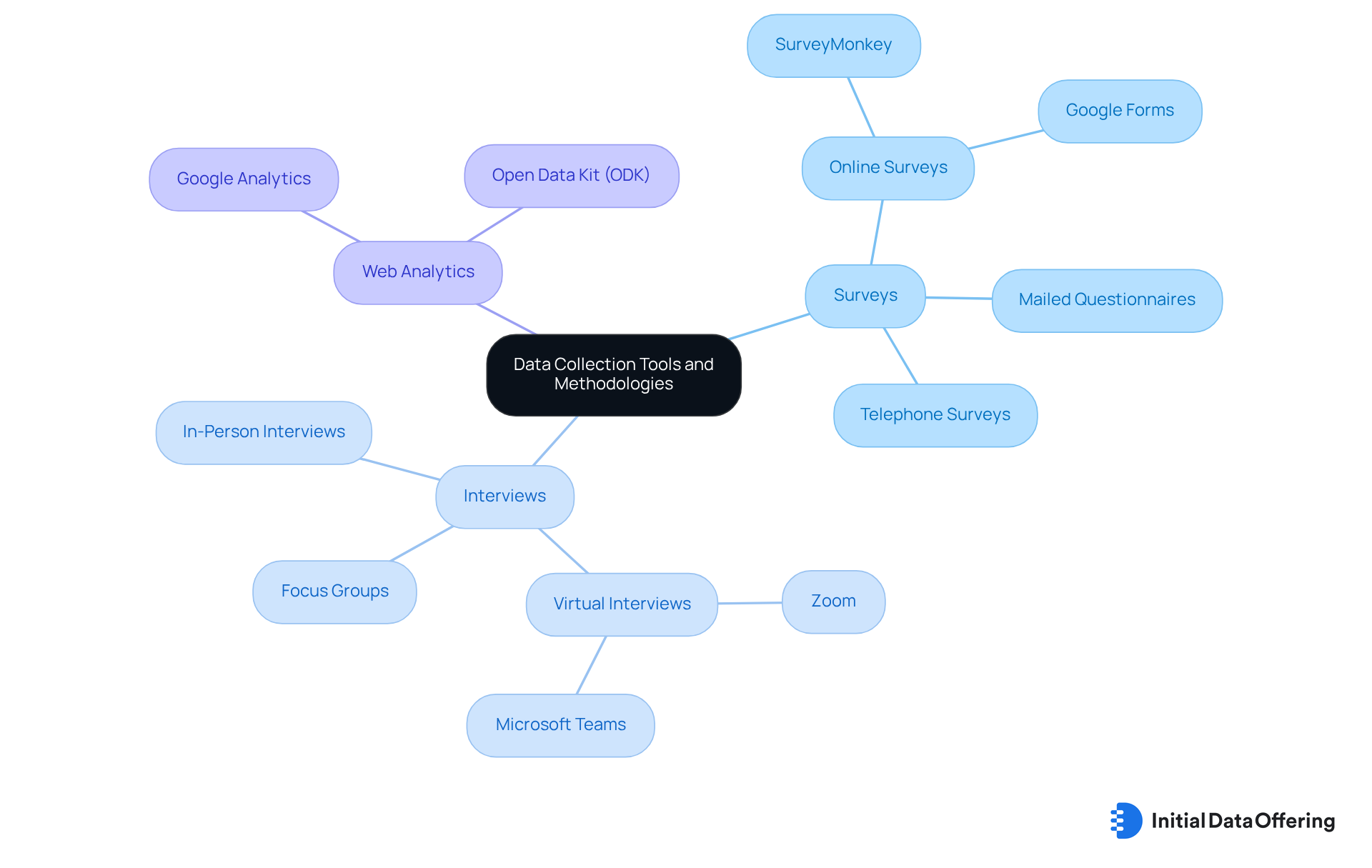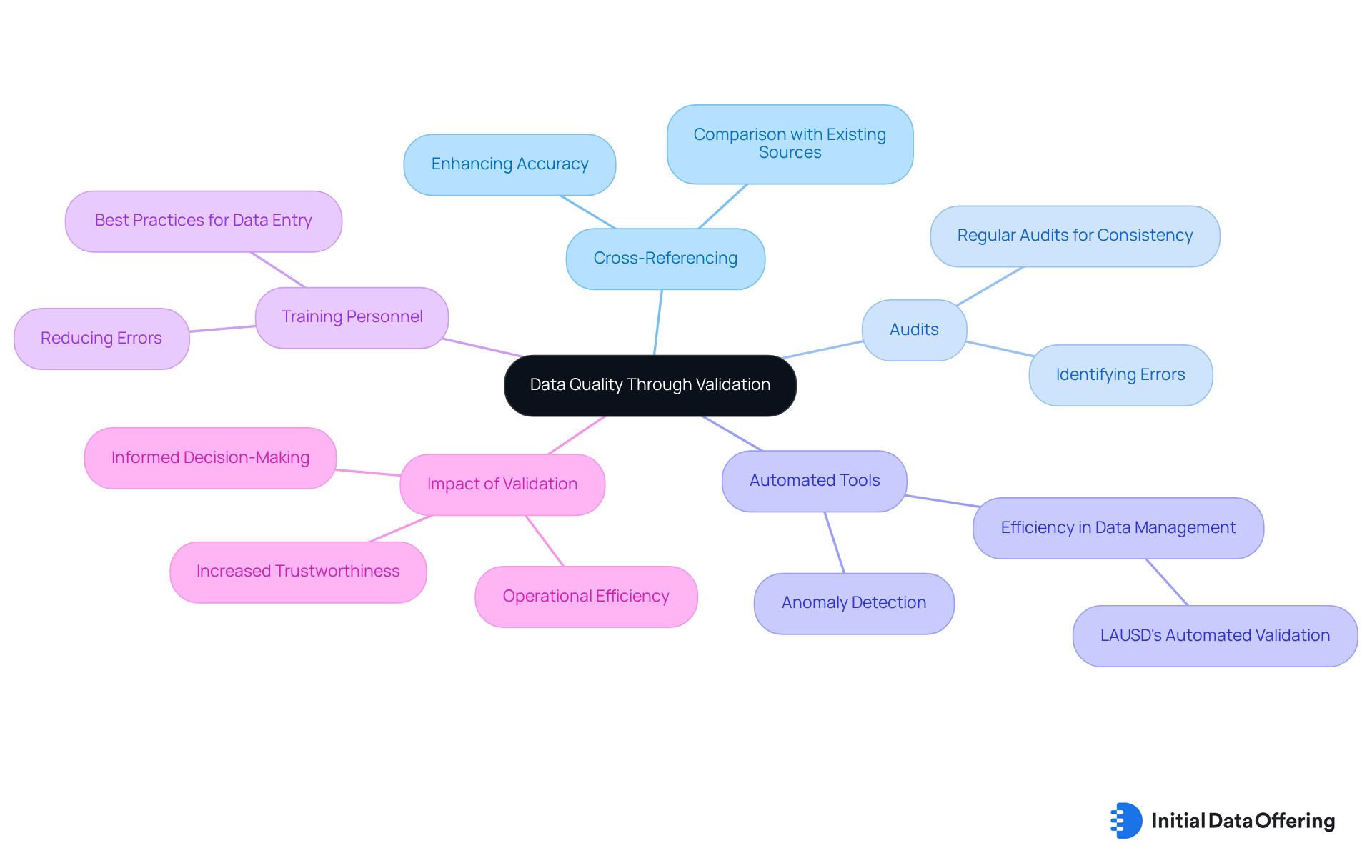3 Key Practices for Ensuring Accurate Website Data Collection

3 Key Practices for Ensuring Accurate Website Data Collection
Overview
Ensuring accurate website data collection hinges on three key practices:
- Defining clear objectives
- Selecting appropriate tools and methodologies
- Ensuring data quality through validation
Each of these practices plays a crucial role in the overall effectiveness of data gathering. Defining clear objectives allows organizations to focus their efforts and streamline the data collection process. Choosing the right tools and methodologies not only enhances efficiency but also ensures that the data collected aligns with specific goals. Finally, implementing validation techniques is essential; these techniques enhance data accuracy and reliability, ultimately leading to more informed decision-making. By integrating these practices, organizations can significantly improve the quality of their data, fostering trust and confidence in their analytical outcomes.
Introduction
Accurate data collection serves as the backbone of effective decision-making in any organization. However, many organizations struggle to gather reliable insights that truly reflect their objectives. By implementing key practices, businesses can streamline their data collection processes, enhancing the quality of the insights they derive. The challenge lies in:
- Defining clear objectives
- Selecting the right tools
- Ensuring data quality through rigorous validation
What strategies can organizations adopt to transform their data collection efforts into a powerful asset for informed decision-making?
Define Clear Objectives for Data Collection
To ensure effective information gathering, organizations must first define clear objectives using the SMART criteria: Specific, Measurable, Achievable, Relevant, and Time-bound. This involves identifying the specific questions that need answers and the decisions that will be influenced by the information. For example, a business aiming to understand consumer preferences should focus on collecting data related to customer demographics, purchasing behavior, and product feedback. By establishing these goals, companies can streamline their information gathering efforts, ensuring that every piece of data serves a clear purpose.
Moreover, clear objectives help communicate the importance of information gathering to stakeholders and establish protocols that ensure consistency and reliability. This organized approach not only enhances the quality of insights derived from the information but also aligns the gathering efforts with broader business strategies. Ultimately, this alignment leads to more informed and efficient decision-making. Additionally, having a well-defined Data Collection Plan significantly improves the accuracy and reliability of the information collected.

Select Appropriate Tools and Methodologies
Selecting the appropriate instruments and approaches for gathering information is crucial for obtaining accurate and relevant insights. Organizations should evaluate various data collection methods, including:
- Surveys
- Interviews
- Web analytics
to determine which aligns best with their objectives. For instance, if the aim is to acquire quantitative data on customer satisfaction, online surveys through platforms such as SurveyMonkey or Google Forms may be the most effective choice. On the other hand, qualitative insights might be more effectively gathered through focus groups or individual interviews. Furthermore, utilizing analytics tools like Google Analytics can yield valuable insights into website data and user behavior. By carefully selecting the right tools, organizations can enhance the efficiency and effectiveness of their information-gathering processes, ultimately leading to more informed decision-making.

Ensure Data Quality Through Validation
Ensuring information quality through validation is essential in the information collection process. Organizations should implement various validation methods to confirm the precision and dependability of the information they collect. This can involve:
- Cross-referencing information with existing sources
- Conducting regular audits
- Employing automated tools to detect anomalies
For instance, the Los Angeles Unified School District (LAUSD) introduced automated validation procedures that greatly enhanced information management efficiency, resulting in renewed funding for their programs. A company that gathers customer feedback through surveys should regularly examine the responses for consistency and precision, ensuring that the information reflects genuine customer sentiments.
Instructing personnel on entry best practices is another useful approach to reduce mistakes during the collection process. Studies show that about 70% of firms have adopted some type of validation methods, highlighting the increasing acknowledgment of its significance. As KJR, a leader in quality assurance, emphasizes, understanding precisely why errors occur and ensuring that information is valid are key components of effective management. By prioritizing data quality, organizations can enhance the trustworthiness of the insights derived from their data, ultimately leading to more informed decision-making and strategic planning. This commitment to accuracy not only improves operational efficiency but also fosters a culture of accountability and continuous improvement within the organization.

Conclusion
Establishing effective website data collection practices is essential for organizations aiming to make informed decisions and drive strategic growth. By focusing on clear objectives, selecting appropriate tools, and ensuring data quality through validation, businesses can enhance the accuracy and reliability of their data collection processes. This structured approach not only streamlines efforts but also aligns them with broader organizational goals, leading to more insightful and actionable outcomes.
The article emphasizes three key practices:
- Defining SMART objectives to guide data collection
- Carefully choosing methodologies that fit these objectives
- Implementing validation techniques to maintain data integrity
Each of these practices plays a crucial role in building a robust data collection framework that supports informed decision-making. For instance, utilizing the right tools, such as surveys for quantitative data or interviews for qualitative insights, ensures that the gathered information is relevant and actionable. Additionally, prioritizing data quality through validation methods fosters trust in the insights derived from the data.
Ultimately, the significance of accurate website data collection cannot be overstated. Organizations that adopt these best practices not only improve their operational efficiency but also cultivate a culture of accountability and continuous improvement. By committing to these principles, businesses can leverage their data to drive innovation, enhance customer experiences, and achieve strategic objectives. Embracing these practices serves as a powerful step toward harnessing the full potential of data in today’s competitive landscape.
Frequently Asked Questions
What are the SMART criteria for defining objectives in data collection?
The SMART criteria stand for Specific, Measurable, Achievable, Relevant, and Time-bound. These criteria help organizations set clear objectives for their data collection efforts.
Why is it important to define clear objectives for data collection?
Defining clear objectives helps organizations identify specific questions to answer and decisions that will be influenced by the information. This ensures that data collection efforts are focused and purposeful.
How can clear objectives impact stakeholder communication?
Clear objectives help communicate the importance of information gathering to stakeholders, establishing protocols that ensure consistency and reliability in the data collected.
What is the benefit of aligning data collection efforts with broader business strategies?
Aligning data collection efforts with broader business strategies leads to more informed and efficient decision-making, enhancing the overall quality of insights derived from the information.
What role does a well-defined Data Collection Plan play in the process?
A well-defined Data Collection Plan significantly improves the accuracy and reliability of the information collected, ensuring that data serves a clear purpose and meets established objectives.